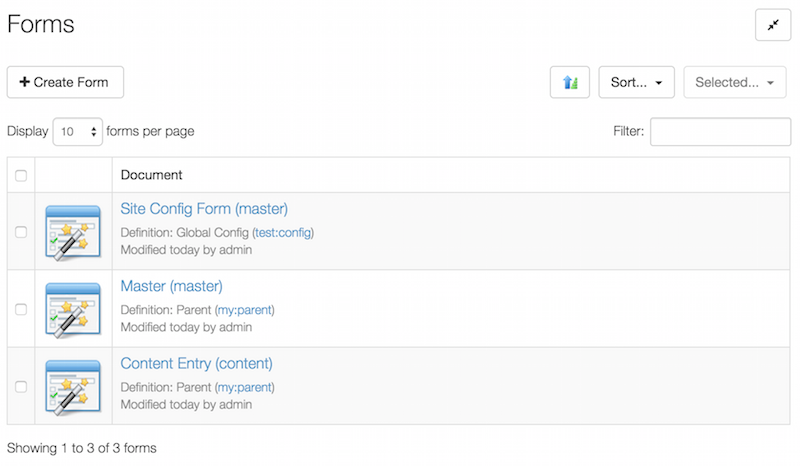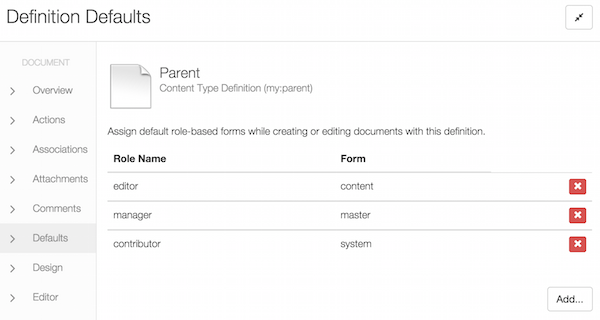Forms
Gitana automatically generates and display intuitive and easy-to-use forms using the Gitana Forms engine.
The Gitana Forms engine was formerly known as the Alpaca Forms engine. It has been integrated into Gitana 4.0 and has been enhanced to run faster, provide more features and execute optimally in modern browsers.
In addition to the standard library of 40+ controls provided by Alpacajs, Cloud CMS provides support for several additional controls that run within the Cloud CMS user interface.

Schemas and Forms
Cloud CMS separates the concept of a schema from a form.
A schema (or definition) describes to Cloud CMS how data should be written to the database. This ensures that your data is stored consistently and that validation logic is asserted before write.
A form consists of options and layout information needed to produce a content entry experience.
Multiple Forms per Schema
Cloud CMS allows you to have multiple forms per schema. You might opt to have a master long form that your administrators use to fully access all fields and make changes. At the same time, you might want to have a content form with only a few fields for use by content editors.

Forms are connected to schemas. They move with your schemas as you migrate them between projects, letting you capture your editorial configurations and reuse them in the future.
Role-based Forms
Cloud CMS also lets you provision forms to users based on their role. You can configure the user interface so that users who have the editor role are automatically provisioned the content form when working with content for a given schema.
Forms can provisioned based on roles right within the Cloud CMS user interface.

Role-based provisioning of forms is configured per project. In this way, you can have multiple projects with entirely different users and purposes. This lets you set up your forms exactly the way you want them.
Additional Fields
Cloud CMS extends the Alpaca Forms engine to provide additional fields for use in:
- picking at content types
- selecting data stores
- finding users
- relating content
- uploading assets
- "slugifying" a dependent text field
The following field types have documentation pending:
- application-picker
- authgrant-picker
- client-picker
- project-picker
- project-userteam-picker
- project-stack-picker
- warehouse-picker
- webhost-picker
- archive
- attachment
- avatar
